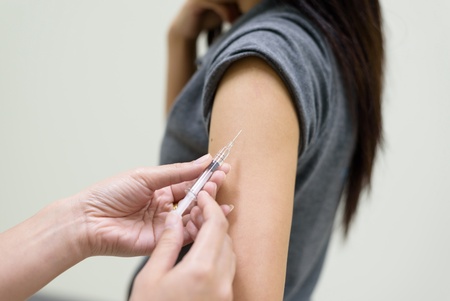Routine vaccination of girls aged 12 or 13 years in school with the human papillomavirus (HPV) vaccine in Scotland has led to a dramatic reduction in cervical disease in later life, finds a study published by The BMJ today.
Unvaccinated women also showed a reduction in disease, possibly due to herd protection, say the researchers.
Many countries, including the UK, offer vaccination to girls to protect them against cervical cancer, and other related cancers, in later life.
Previous results from research studies showed that vaccination protects against the most carcinogenic HPV types 16 and 18, which are responsible for 70% of cervical cancer cases worldwide. Some women in Grampian took part in these early vaccine studies which resulted in the introduction of the HPV vaccination programme across the UK. Until now, data when all 12-13 year old girls are offered vaccination routinely in school has been lacking.
Scotland has an established national cervical screening programme and in 2008 introduced a national HPV immunisation programme for girls aged 12 and 13, with a catch-up programme up to age 18.
So a team led by Tim Palmer at the University of Edinburgh with support from the University of Aberdeen decided to use this data to measure the impact of routine vaccination of girls with the bivalent HPV vaccine (which targets HPV types 16 and 18) on levels of abnormal cervical screening tests and cervical precancer (known as cervical intraepithelial neoplasia or CIN).
CIN is divided into grades; CIN1, 2+ or 3+. Women with CIN2 and CIN3 are at risk of developing cervical cancer in the future if it is not detected and treated. They analysed vaccination and screening records for 138,692 women born between 1988 and 1996 who had a cervical screening test at age 20 (the age of invitation to first cervical screening in Scotland until 2016, when the starting age was raised to 25 years).
Data included unvaccinated women (born 1988-90; first screened 2008-10), women eligible for catch-up vaccination at age 14-17 (born 1991-94; first screened 2011-14), and women routinely vaccinated at age 12-13 (born 1995-96; first screened 2015-16).
After taking account of other potentially influential factors that might be important, they found that compared with unvaccinated women born in 1988, vaccinated women born in 1995 and 1996 showed an 89% reduction in CIN 3 or worse and an 88% reduction in CIN2 or worse.
Unvaccinated women also showed a reduction in disease, suggesting that interruption of HPV transmission in Scotland has created substantial herd protection.
The researchers point to some limitations. For example, the analysis was restricted to data from the first year of screening and attendance at age 20 was 51% for vaccinated women and 23% for unvaccinated women, possibly leading to over-estimation of vaccine effectiveness but this would be counter-balanced by the herd protection.
Nevertheless, they say this study demonstrates that routine immunisation with the bivalent HPV vaccine is highly effective against high grade cervical disease, and they call for reappraisal of screening and referral services to reflect this evidence.
“The findings emphasise the credibility of using high risk HPV infection as an early marker of the effectiveness and success of the vaccine and underpin the recent call for global action on cervical cancer from the World Health Organization,” they conclude.
In a linked editorial, Julia Brotherton, Medical Director at VCS Foundation in Australia, says the findings are “dramatic and document a considerable reduction in high grade cervical disease over time.”
We must work towards a world in which all girls and their families are offered, and the majority accept, HPV vaccination, wherever they live,” she writes. “We must also actively develop, resource, and scale-up more effective, feasible and culturally acceptable strategies for cervical screening, such as self-collection of specimens, if we are ever to effectively reduce the global burden of cervical cancer.”
Professor Maggie Cruickshank from the University of Aberdeen said: “The impact of the vaccine on the number of women offered the vaccine has already been seen in the Women’s Day Clinic in Aberdeen which sees women with abnormal smear tests.
“With fewer women having an abnormal test and fewer women needing treatment, our waiting times have fallen and we have been able to free up staff and clinics for other conditions.
“It is important that women still attend for cervical screening to reduce their risk even further.”


